What are the mainstream water purifiers on the market? What are the advantages and disadvantages of each? How to choose a suitable cost-effective water purifier?
The mainstream types of water purifiers on the market and their advantages and disadvantages are as follows, combining different technical characteristics and application scenarios for your reference:
1. RO reverse osmosis water purifier
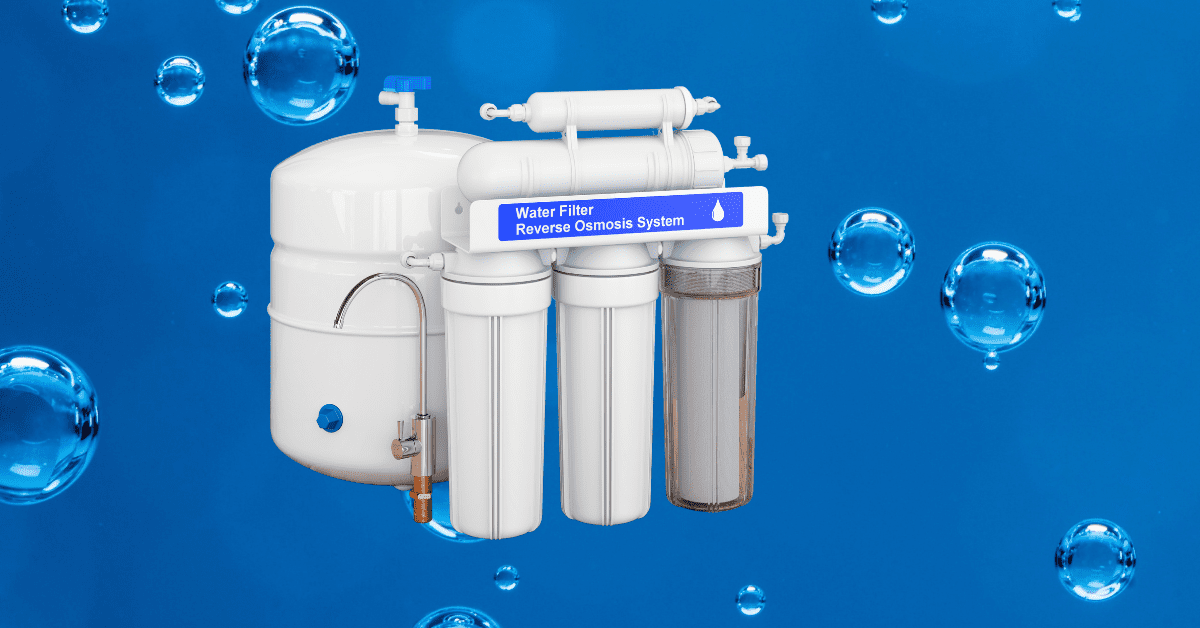
Principle: Through RO reverse osmosis membrane (filtration precision 0.0001 micron) to remove almost all impurities in water, including bacteria, viruses, heavy metals, scale, etc., and the output water is pure water.
Advantages: very high filtration precision, can be directly consumed, especially suitable for complex water quality or heavily polluted areas. It can effectively solve high hardness water (scale problem) and heavy metal pollution.
Disadvantages: Electricity is required and waste water is generated (the ratio of pure water to waste water is about 1:3), low water utilization. Removal of minerals, long-term drinking may lack of trace elements; filter replacement cost is high.
Improved technology: Some new RO machines solve the problem of excessive TDS value in the first glass of water through “no aging design” and optimize the wastewater rate.
2. Ultra-filtration water purifier
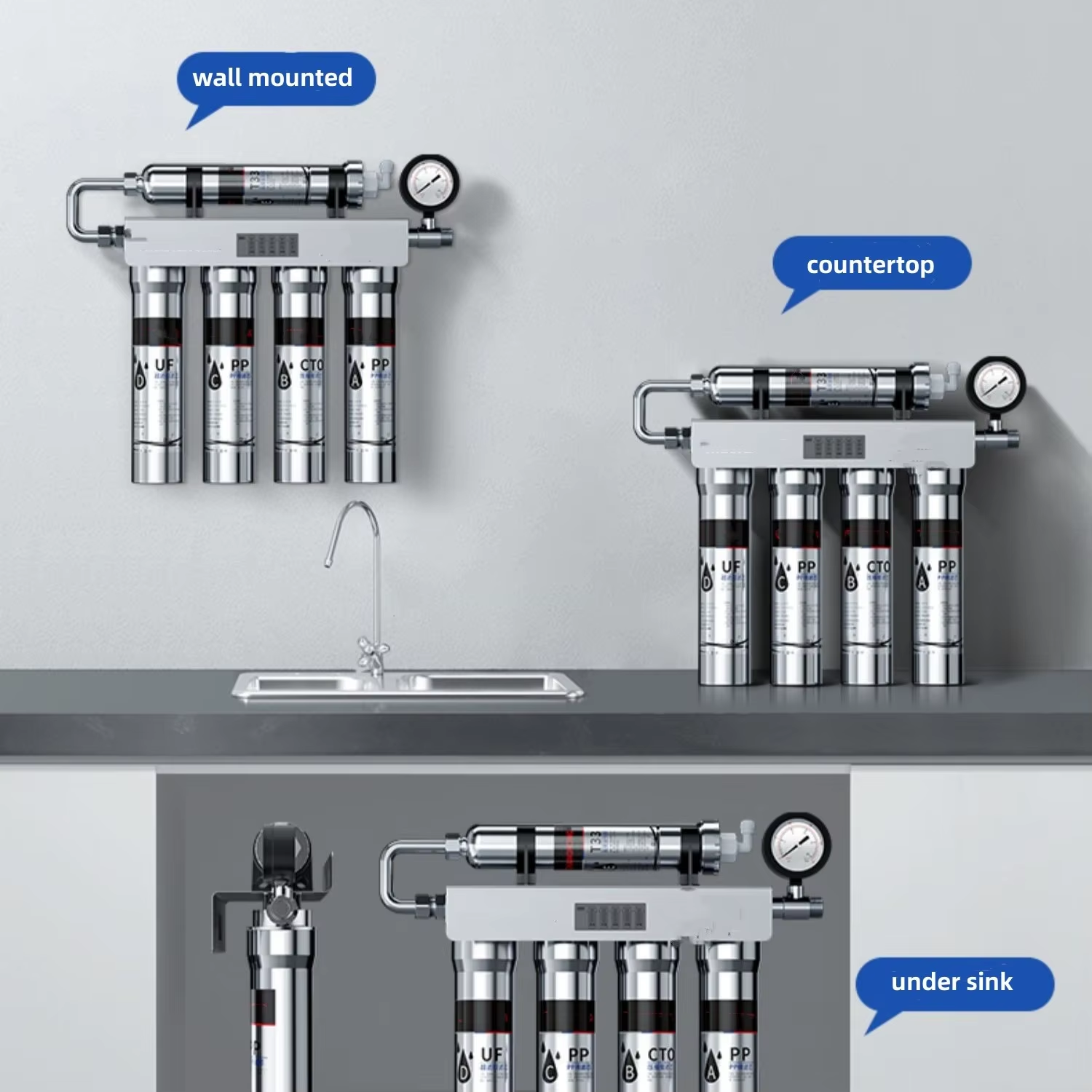
Principle: the use of ultrafiltration membrane (filtration accuracy of 0.01 micron) to retain large molecules of impurities, retaining minerals.
Advantages: no need for electricity, no waste water, suitable for daily drinking and the demand for minerals. High flow rate, easy to install, low maintenance cost.
Disadvantages: unable to remove calcium and magnesium ions (scale) and dissolved heavy metals in the water.
Regular flushing of the filter membrane is required, otherwise it is easy to be clogged.
3. Water softener
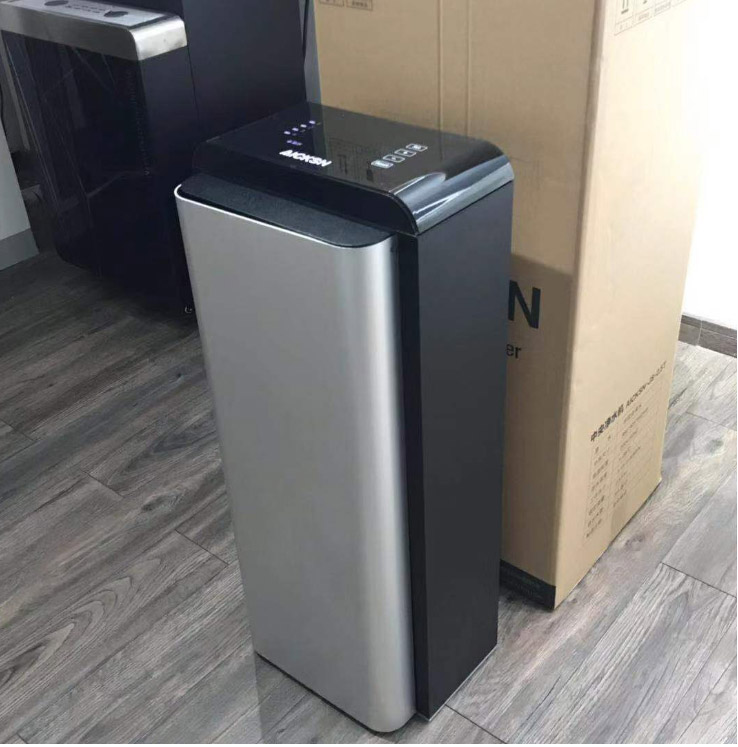
Principle: Remove calcium and magnesium ions from water through ion exchange resin to reduce water hardness.
Advantages: Significantly reduces limescale, protects pipes and appliances (e.g. water heaters, washing machines.). Enhance the bathing experience, make clothes softer and skin smoother.
Disadvantages: Cannot filter bacteria, viruses and other pollutants, not directly drinkable. Regular regeneration of the resin with salt is required and produces salt-laden wastewater.
4. Centralized water purifier
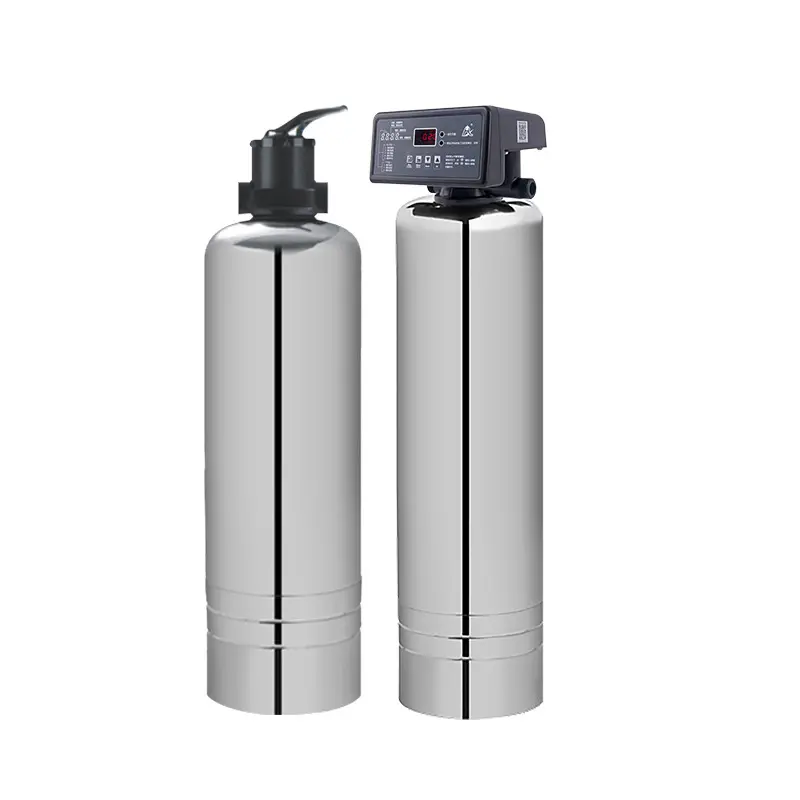
Principle: installed in the family's total water inlet, through the activated carbon, KDF and other filter media whole-house purification
Advantages: covering the whole house water, long life of the filter media (more than 5 years), easy to operate and suitable for improving the quality of living water (such as laundry, bathing)
Disadvantages: low filtration precision, unable to meet the demand for direct drinking larger volume, occupying space.
5. Activated carbon water purifier
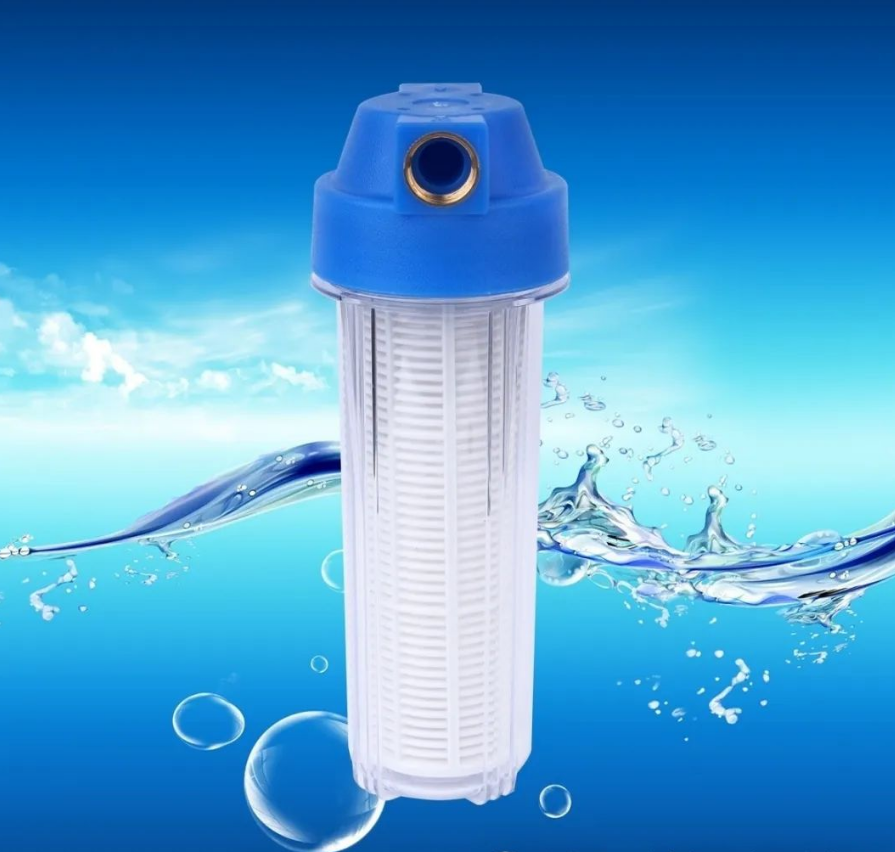
Principle: through the activated carbon adsorption odor, residual chlorine and some organic matter
Advantages: improve taste, low cost, suitable for better water quality in the city often as a pre-filter component of other water purifiers
Disadvantages: unable to remove scale, heavy metals and micro-organisms, the filter element is easily saturated (need to be replaced in 3-6 months)
6. Water Ionizer
Principle: Water electrolysis technology generates alkaline water and acidic water, claiming to regulate the acid-base balance of the human body.
Advantages: Alkaline water can be used for drinking, acidic water is used for cleaning or disinfection. Some skin problems may have secondary therapeutic effects
Disadvantages: High cost (about $6,000 or more), requires electricity
Acid-alkaline value depends on electrolysis plate, limited applicability, doctor's guidance required for use
7. Magnetized water machine
Principle: change the structure of water molecules through magnetic field, claiming to promote absorption.
Advantages: small molecule water is more easily absorbed by the body 4.
Disadvantages: possible irritation to patients with gastrointestinal disorders.
Lack of scientific evidence to support its health effects, market recognition is low
Suggestions for selection
Choose according to the water quality: high hardness water in the north: prioritize RO machine or water softener.
City tap water (residual chlorine): activated carbon or ultrafiltration + activated carbon combination.
Rural groundwater: RO machine or central water purifier + end ultrafiltration.
Maintenance cost: RO machine and ultrafiltration machine need to change cartridge regularly (cost about 30 - 150 USD/year), central water purifier has lower maintenance cost. The above information synthesizes the technical characteristics, user reviews and industry trends, you can further choose according to the actual needs and budget. For a comparison of specific brands or models, please refer to the detailed analysis in the source
If you have any other questions,pls feel free to contact us!
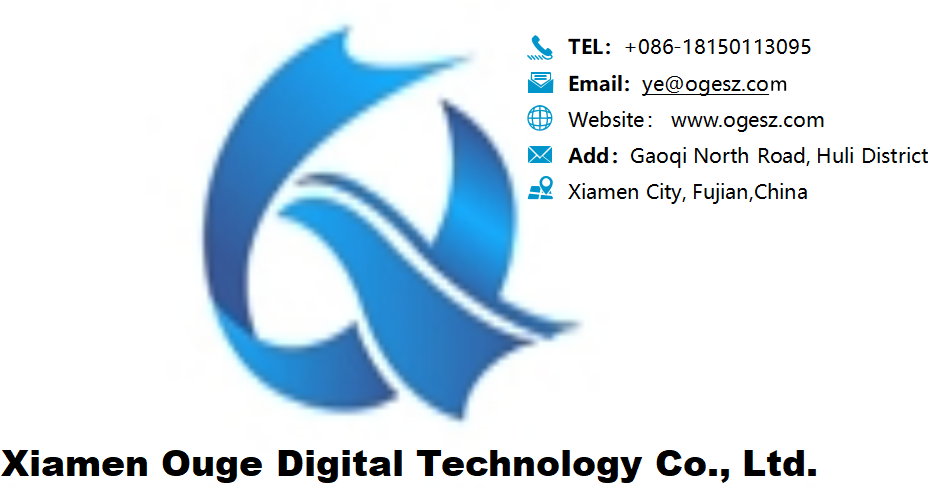






 Reverse Osmosis Equipment: The Core Technology of Modern Water Treatment
Reverse Osmosis Equipment: The Core Technology of Modern Water Treatment
 Winter Maintenance Guide for Water Treatment Equipment: Follow These Steps to Prevent Freeze Damage and Save Trouble
Winter Maintenance Guide for Water Treatment Equipment: Follow These Steps to Prevent Freeze Damage and Save Trouble
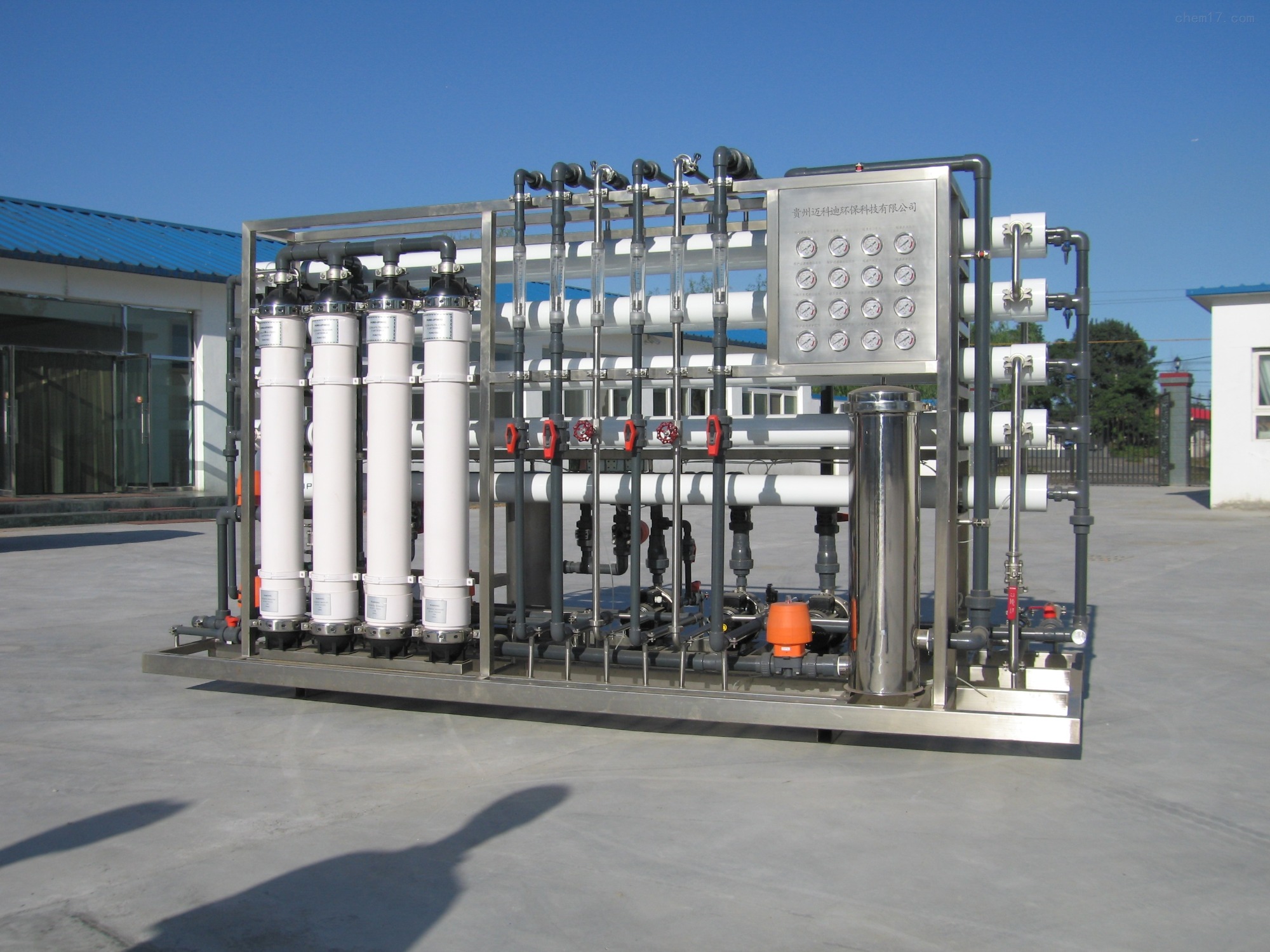 Two-Stage Reverse Osmosis: Turning Every Drop of Water into the Art of Purity
Two-Stage Reverse Osmosis: Turning Every Drop of Water into the Art of Purity
 Reverse Osmosis Technology for Wastewater Treatment: Understanding How RO Systems Operate
Reverse Osmosis Technology for Wastewater Treatment: Understanding How RO Systems Operate